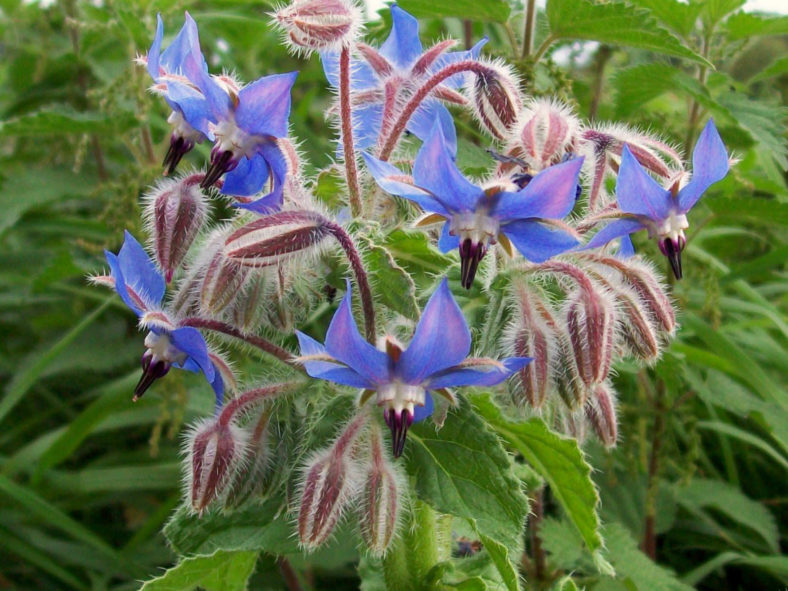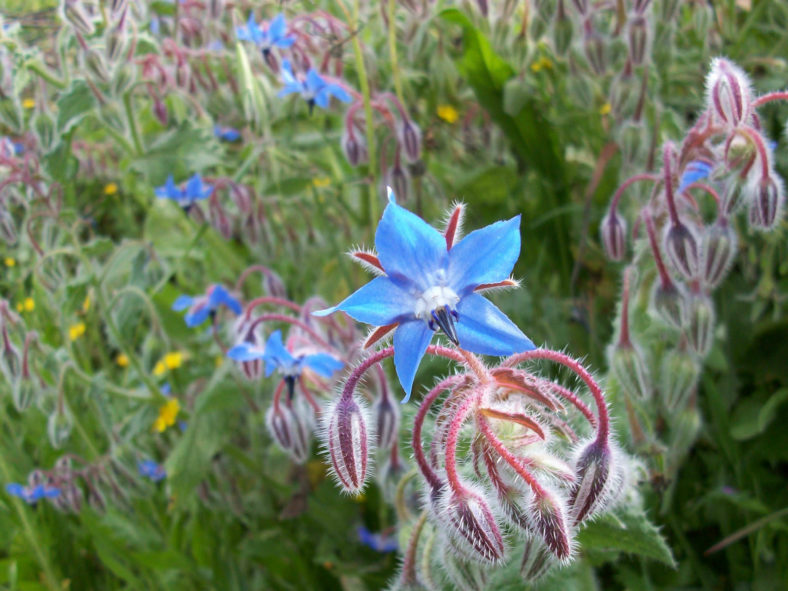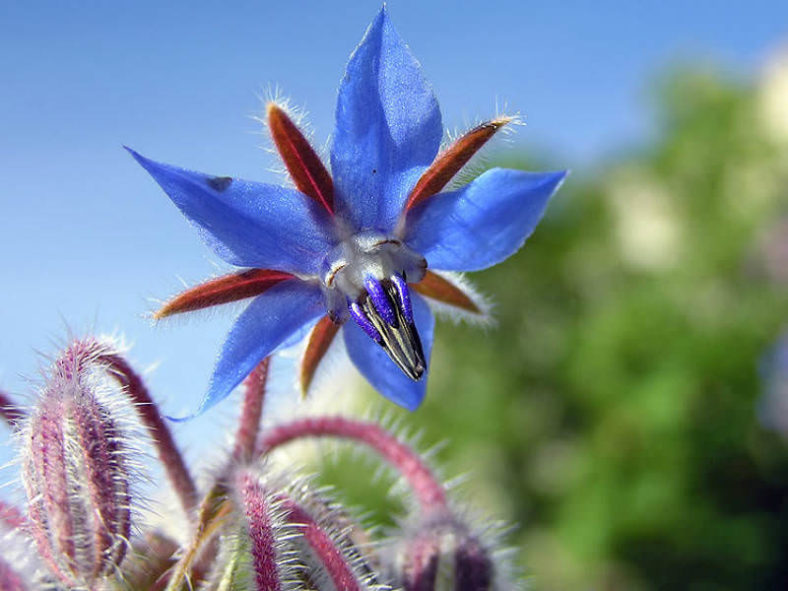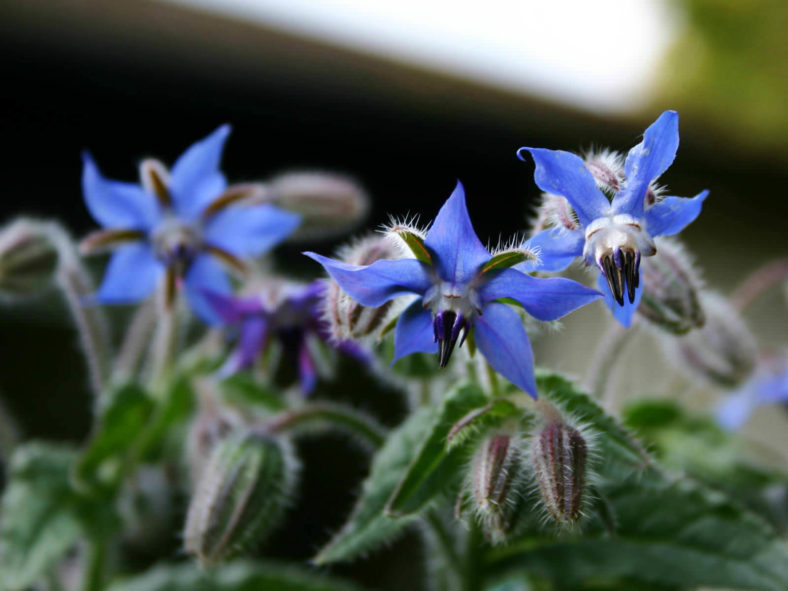Scientific Name
Borago officinalis L.
Common Name(s)
Borage, Common Borage, Starflower, Cool Tankard, Talewort, Bee Bread, Bee Plant, Bourrache (French), Borretsch (German), Einjähriger Borretsch (German), Gurkenkraut (German), Boragine (Italian), Borandella (Italian), Boragem (Portuguese), Borraja (Spanish), Gurkört (Swedish)
Synonym(s)
Borago hortensis
Scientific Classification
Family: Boraginaceae
Subfamily: Boraginoideae
Genus: Borago
Origin
Borago officinalis is native to Aleppo (Syria) but is now naturalized in most parts of Europe.
Flower
Color: Blue
Bloom Time: Continuously for most of the year
Description
Borago officinalis is a large annual plant with fleshy, branched, and hollow stems with white, stiff, prickly hairs. It grows up to 3.3 feet (1 m) tall. Large leaves are alternate, wrinkled, deep green, oval, and pointed, up to 3 inches (7.5 cm) long and about 1.5 inches (3.8 cm) wide.
Flowers, which terminate the cells, are bright blue and star-shaped, distinguished from those of every plant in this order by their prominent black anthers, which form a cone in the center. Its flowering season is relatively long in a temperate climate, from June to September. In milder climates, it will bloom continuously for most of the year. Fruits consist of four brownish-black nutlets.

How to Grow and Care
Borage grows best if direct-seeded. Barely cover the seeds with soil and keep them well-watered. They are tolerant of any soil, even poor, dry soil. However, a sunny location with rich, well-draining soil is optimal.
If you choose to start seedlings, transplant them before they become pot-bound. Plan to start seedlings about 3-4 weeks before the last expected frost, and don't transplant outdoors until the soil has warmed. Once seedlings are about 2 to 3 inches (5 to 7.5 cm) tall, thin them to approximately 12 inches (40 cm) apart.
Plants in poor soil will benefit from periodic feeding with any fertilizer labeled for use on edible plants. Something with a high phosphorous number (the middle number on a fertilizer package) will help keep them in flower. Plants can be pinched or pruned to encourage branching and keep them shorter.
See more at How to Grow and Care for Borage.
Cultivars
Links
- Back to genus Borago
- Plantpedia: Browse flowering plants by Scientific Name, Common Name, Genus, Family, USDA Hardiness Zone, or Origin
Photo Gallery
Click on a photo to see a larger version.




